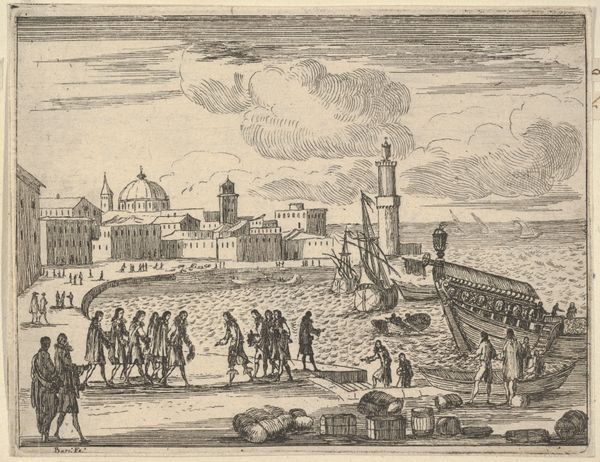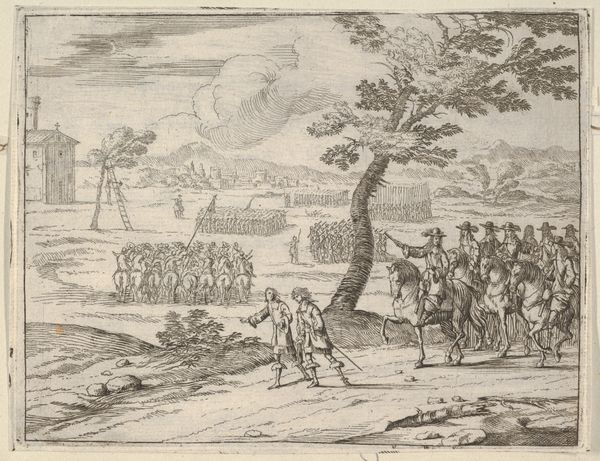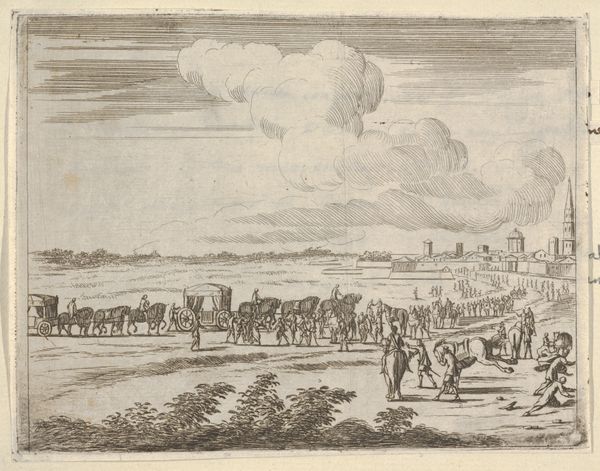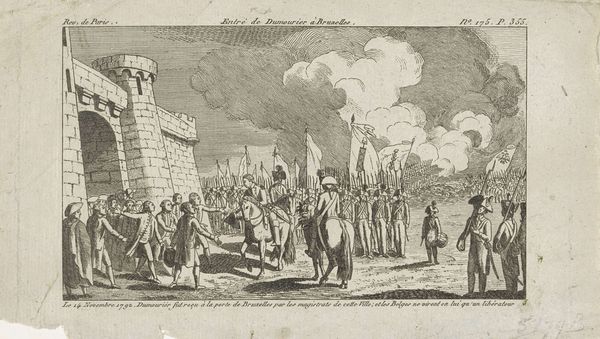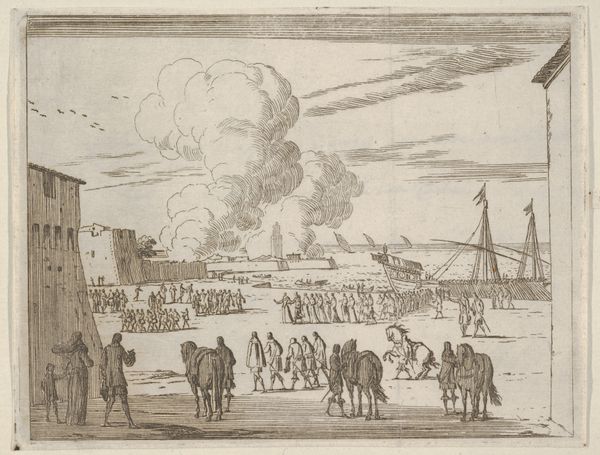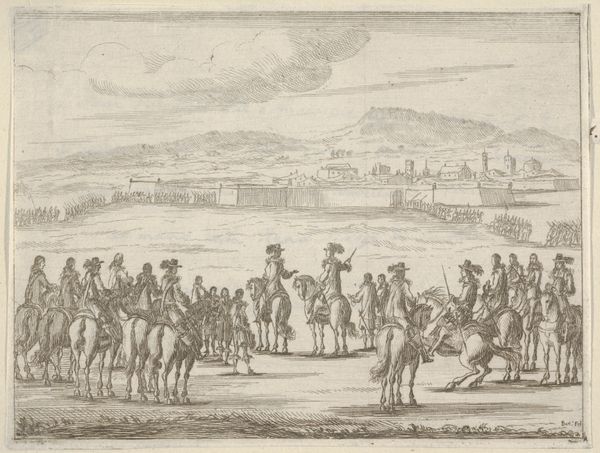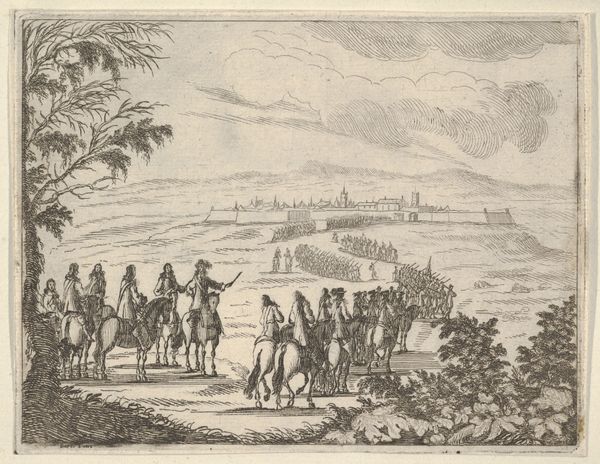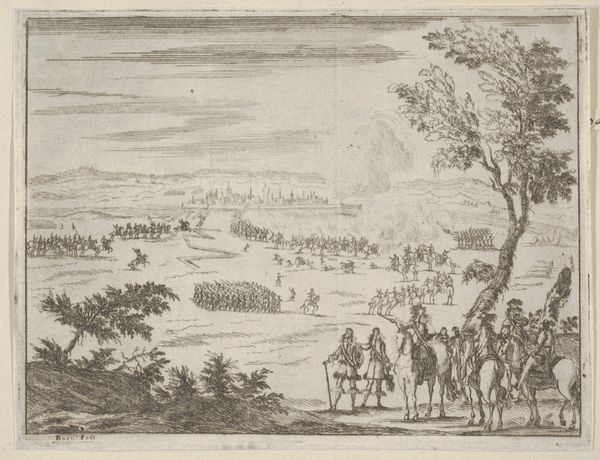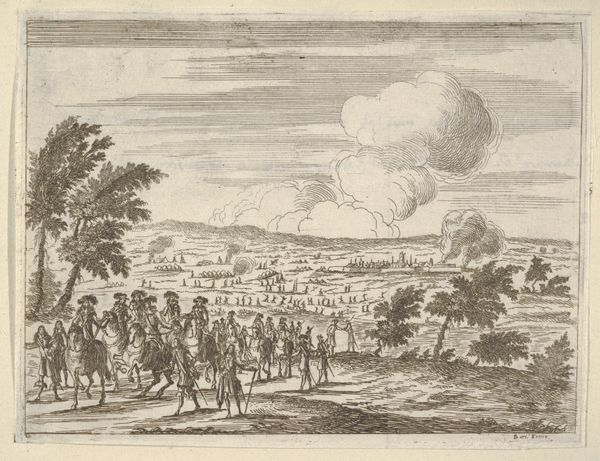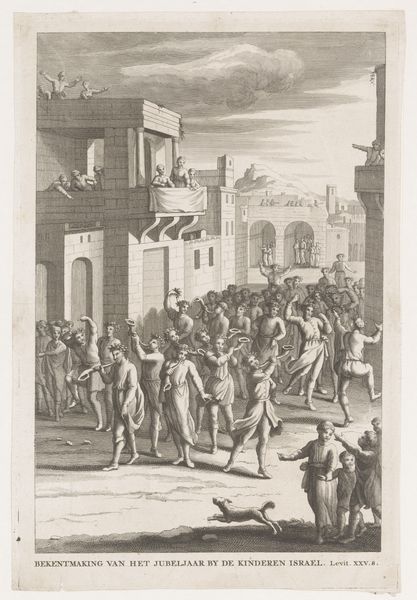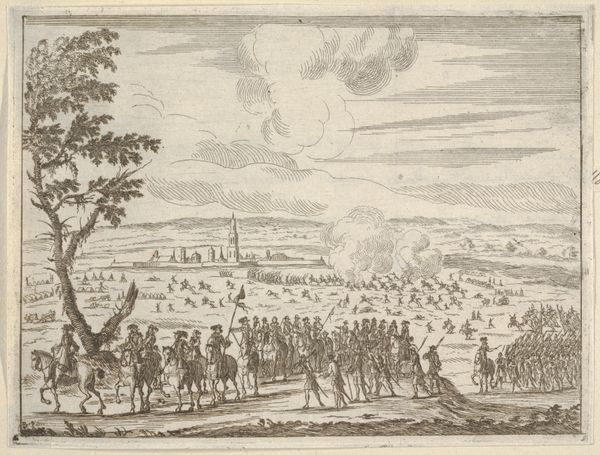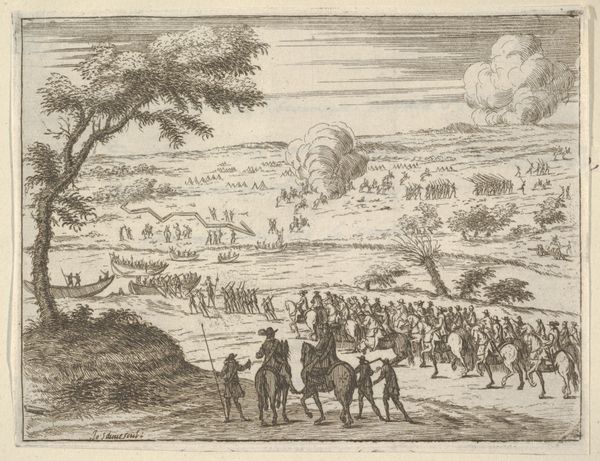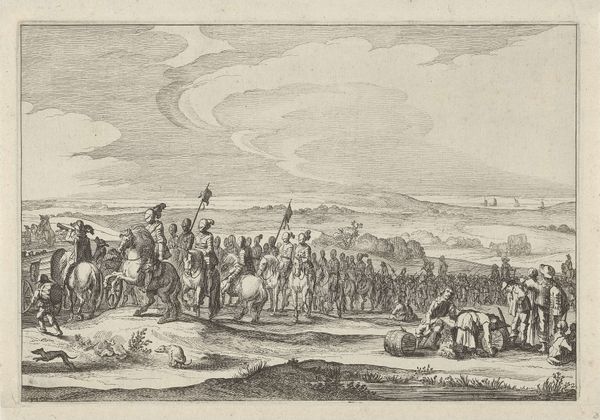![Francesco I d'Este is Named the Deputy of the Catholilc King and is Sent to Catalogna, from L'Idea di un Principe ed Eroe Cristiano in Francesco I d'Este, di Modena e Reggio Duca VIII [...] by Bartolomeo Fenice (Fénis)](/_next/image?url=https%3A%2F%2Fd2w8kbdekdi1gv.cloudfront.net%2FeyJidWNrZXQiOiAiYXJ0ZXJhLWltYWdlcy1idWNrZXQiLCAia2V5IjogImFydHdvcmtzLzliNzRjYjNmLTFmZmQtNGM4Yi1iOWYxLTA0MGVmMmExOTJlOS85Yjc0Y2IzZi0xZmZkLTRjOGItYjlmMS0wNDBlZjJhMTkyZTlfZnVsbC5qcGciLCAiZWRpdHMiOiB7InJlc2l6ZSI6IHsid2lkdGgiOiAxOTIwLCAiaGVpZ2h0IjogMTkyMCwgImZpdCI6ICJpbnNpZGUifX19&w=3840&q=75)
Francesco I d'Este is Named the Deputy of the Catholilc King and is Sent to Catalogna, from L'Idea di un Principe ed Eroe Cristiano in Francesco I d'Este, di Modena e Reggio Duca VIII [...] 1659
0:00
0:00
drawing, print, etching, engraving
#
drawing
#
baroque
# print
#
etching
#
line
#
cityscape
#
history-painting
#
engraving
Dimensions: Sheet: 4 13/16 × 6 3/8 in. (12.2 × 16.2 cm) Plate: 4 13/16 × 6 1/4 in. (12.2 × 15.9 cm)
Copyright: Public Domain
Curator: This etching, dating back to 1659, is titled "Francesco I d'Este is Named the Deputy of the Catholic King and is Sent to Catalogna, from L'Idea di un Principe ed Eroe Cristiano in Francesco I d'Este, di Modena e Reggio Duca VIII [...]" It’s by Bartolomeo Fenice. The scene commemorates a historical event, a diplomatic appointment for Francesco I d'Este. Editor: The stark lines give it a feel of cool formality. It's an official occasion rendered in meticulous detail. Though, the clouds give the composition a turbulent vibe. Curator: It comes from a series intended to promote and solidify the Duke’s image. In the context of courtly propaganda, the depiction of such an event reinforced his authority. We need to see these prints in context, reflecting the socio-political climate. Editor: The arrangement of figures leading to that central handshake – that's potent imagery. It evokes ritual, agreement, and sanctioned power. It highlights the transfer of responsibility in this theatre. Curator: Right, it reinforces the Duke’s importance by linking him directly to the Catholic King, emphasizing Modena's allegiance and relationship within the Spanish political framework. Look how small they are against the architecture. Editor: But is that a feeling of entrapment? Enclosed between sea, towering walls, figures marching towards the viewer? This event becomes more than just an agreement between rulers, but maybe a personal, more internal feeling about a transfer of power. The etching speaks about how political symbols can mask personal emotions, revealing history in unexpected ways. Curator: The placement in the book 'L'Idea di un Principe ed Eroe Cristiano', emphasizes how rulers cultivated an ideal representation. This suggests it’s less about genuine portrayal of a historical event, and more about demonstrating the virtues that leadership should embody to justify its claim to power. Editor: An official visual, not merely reflecting historical event. The handshake takes on iconic status! Curator: Agreed, it functions more as a tool to control collective memory through the press, establishing legitimacy through print circulation. Editor: It makes me reconsider my ideas on historical context, I find its iconography still speaking through history. Curator: The political sphere of Baroque art still inspires so many critical questions.
Comments
No comments
Be the first to comment and join the conversation on the ultimate creative platform.
